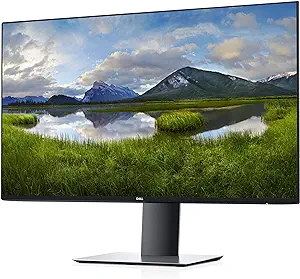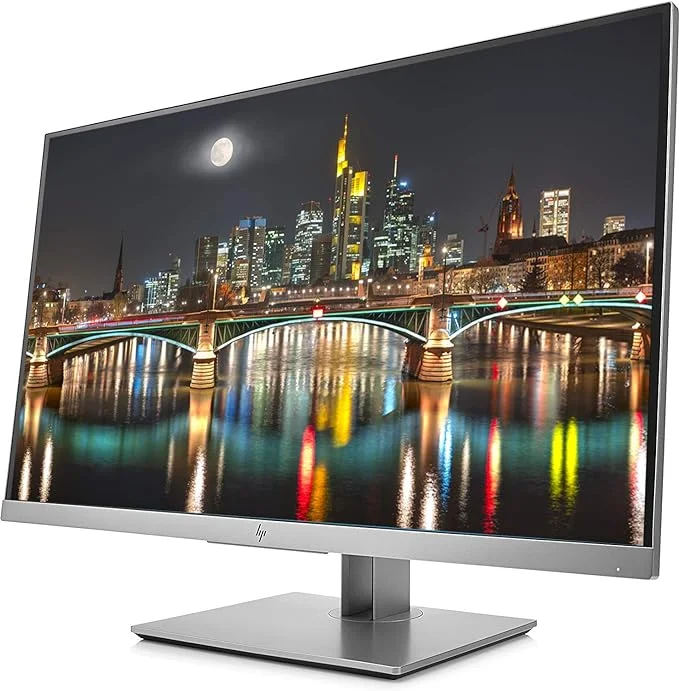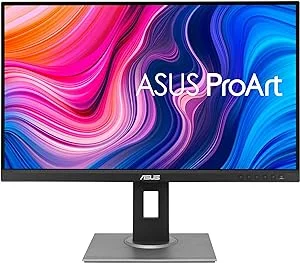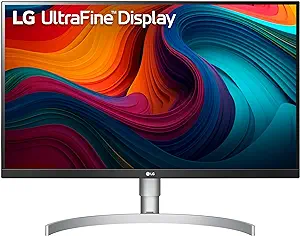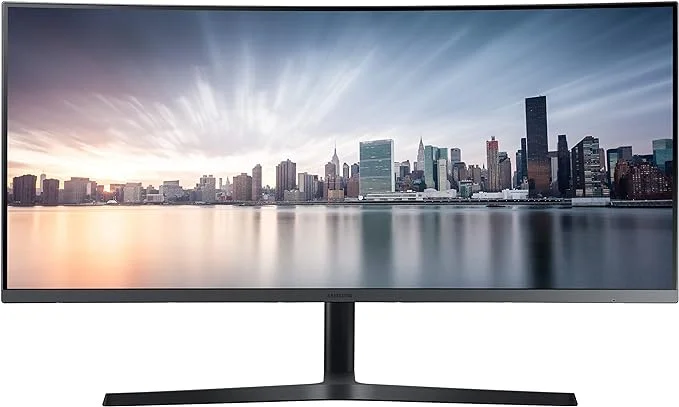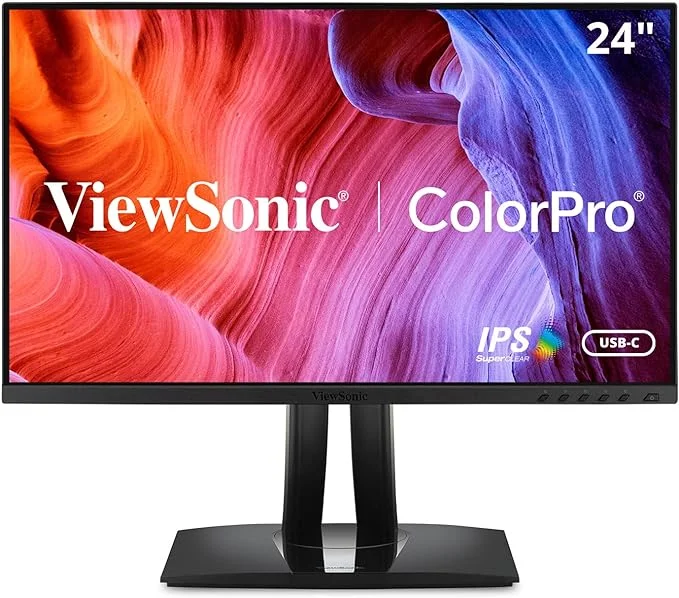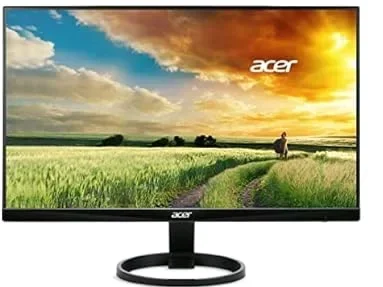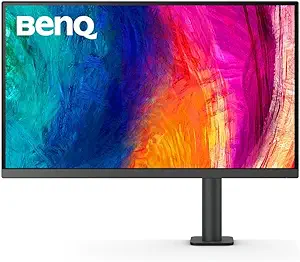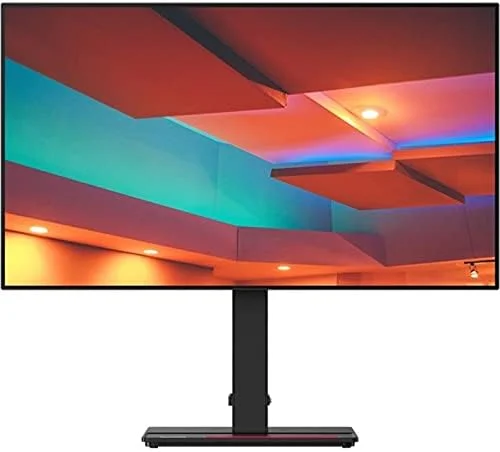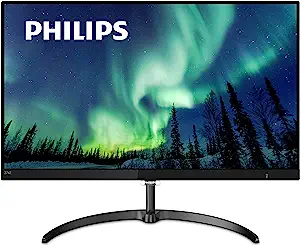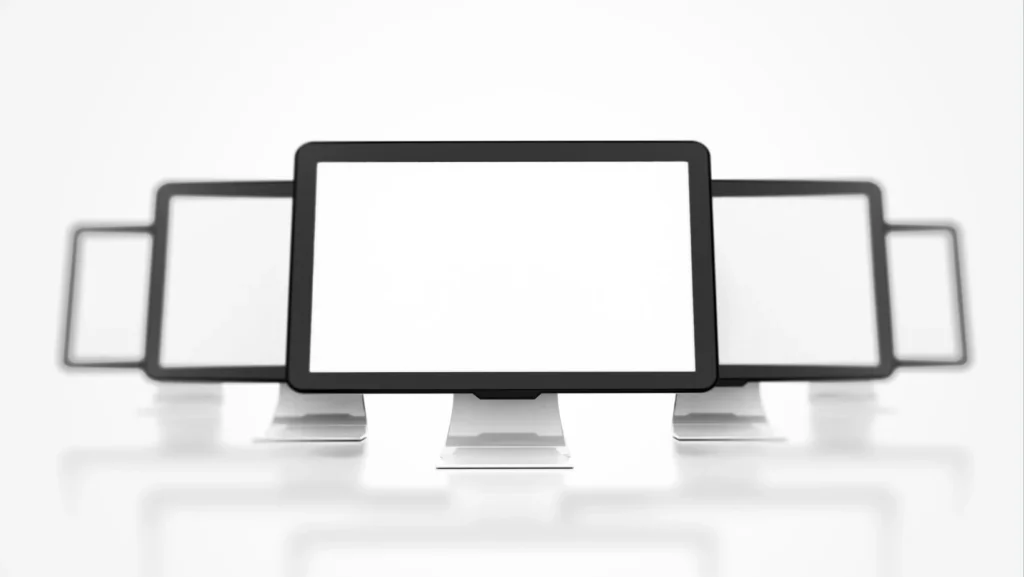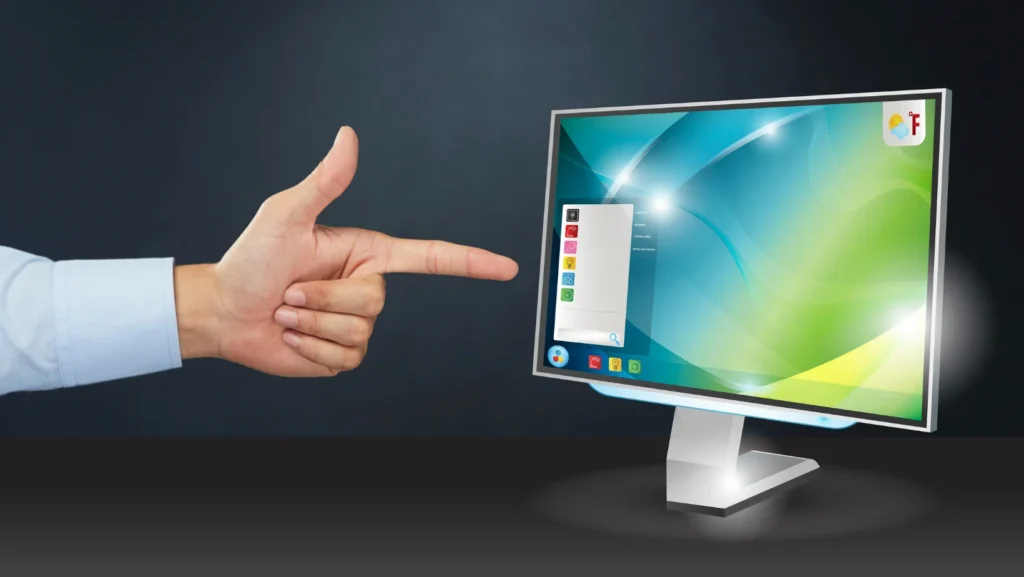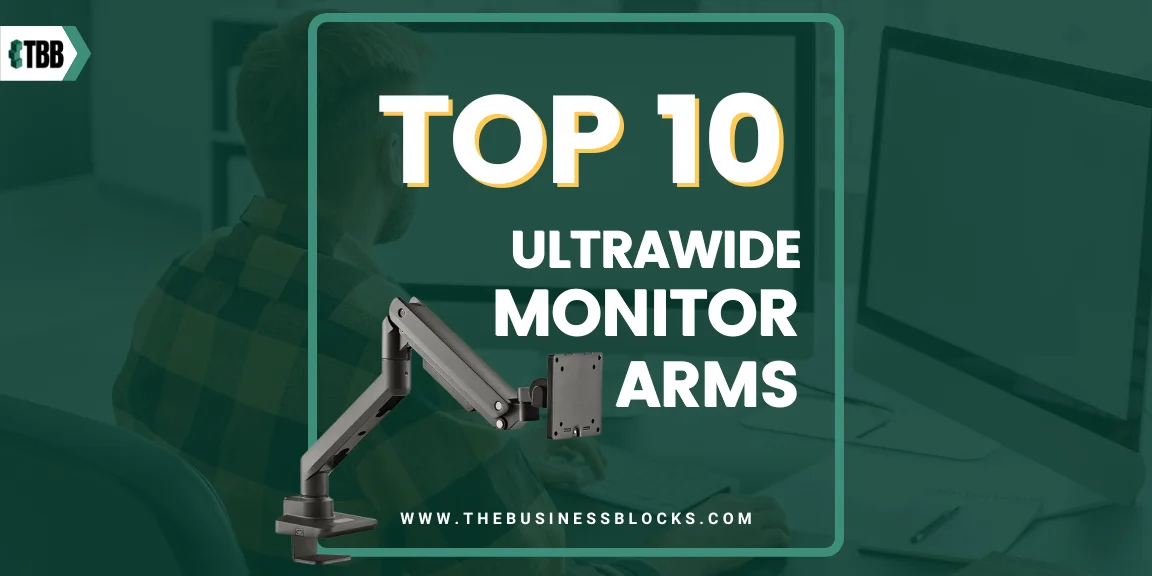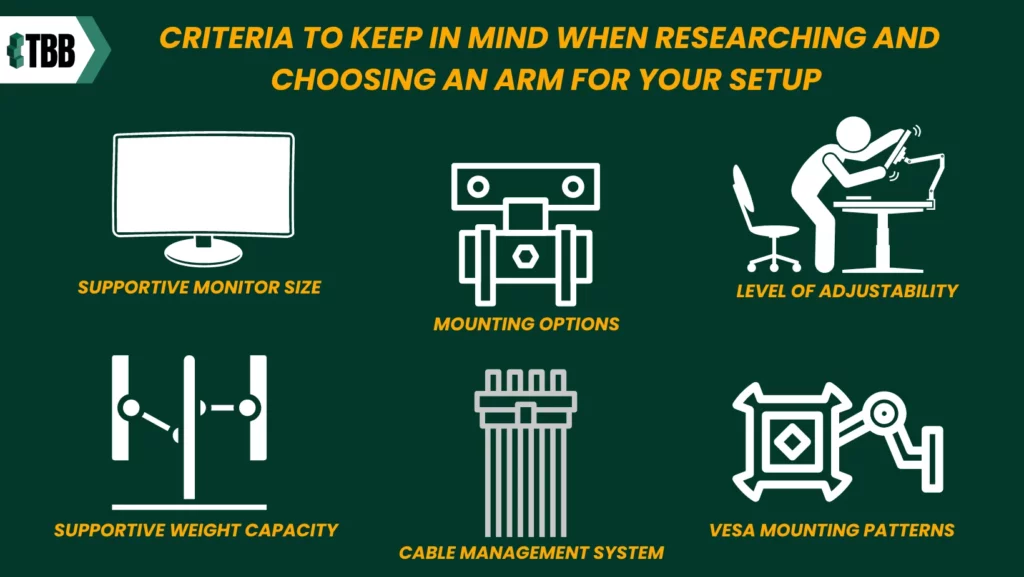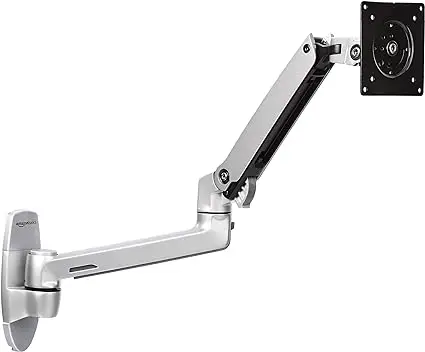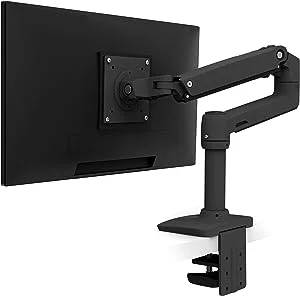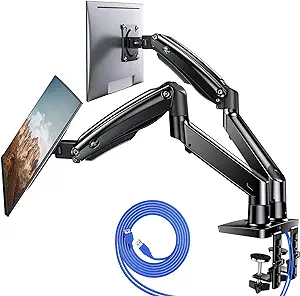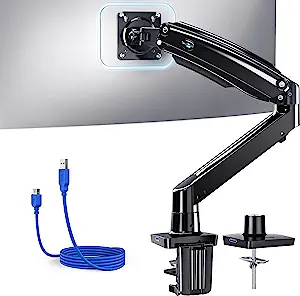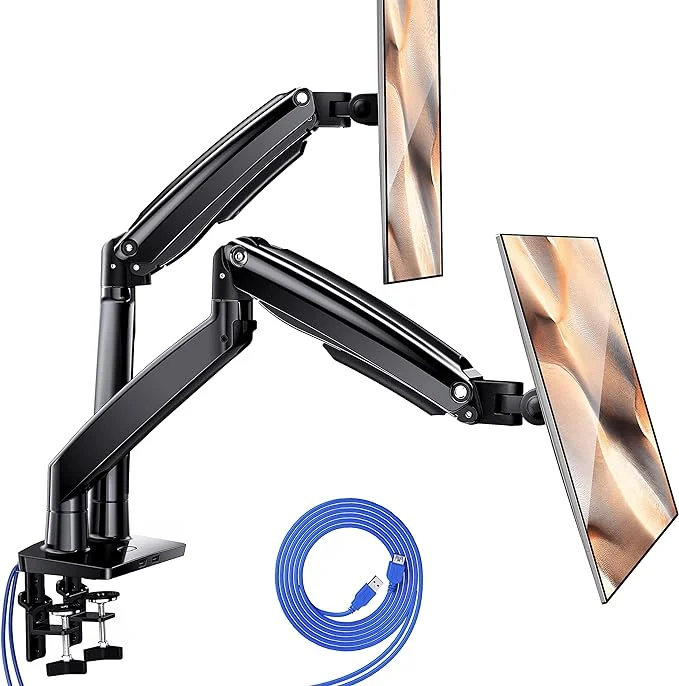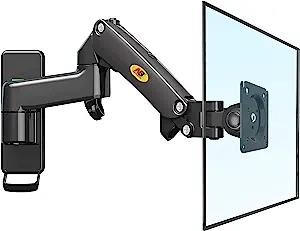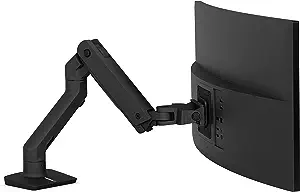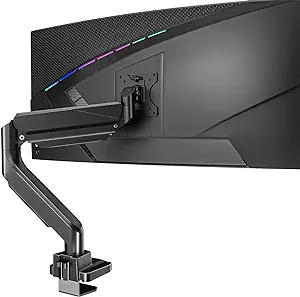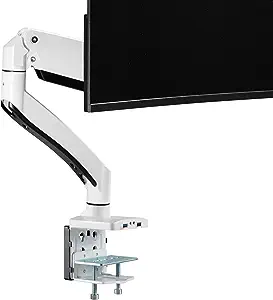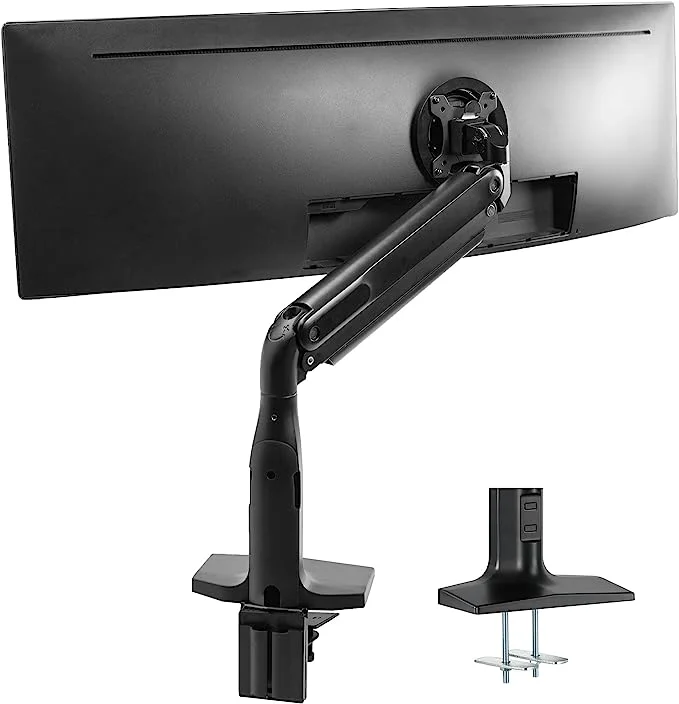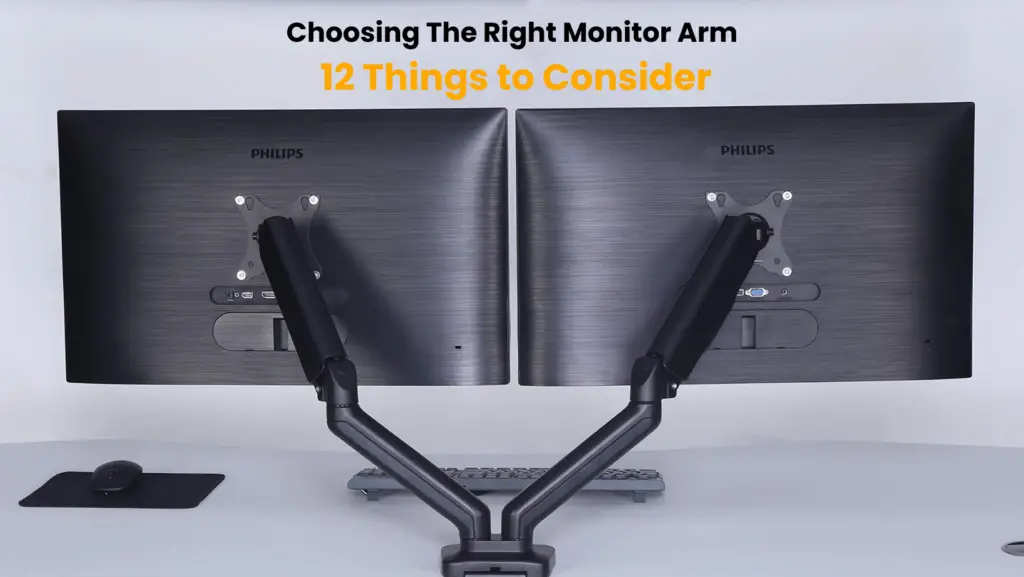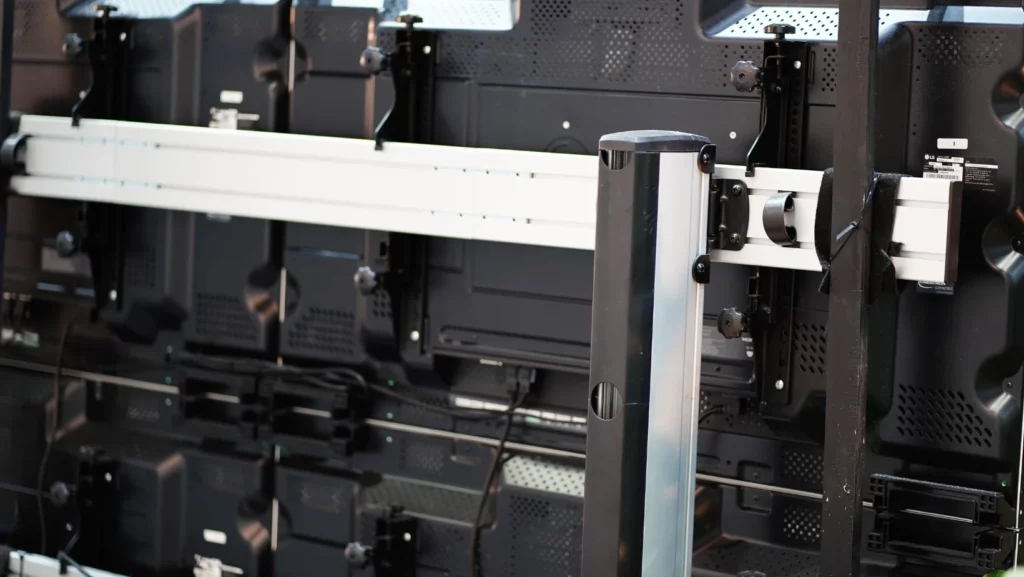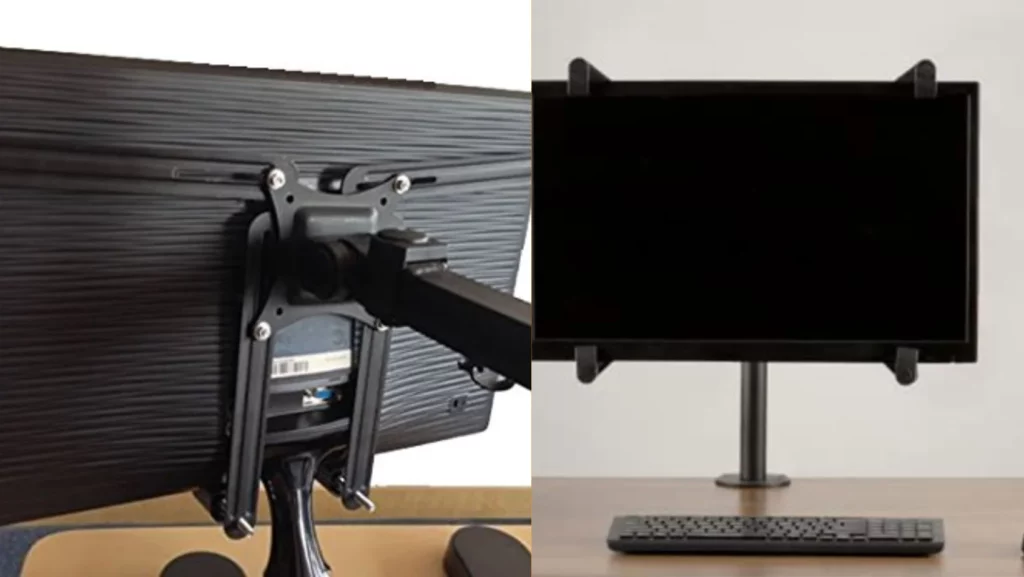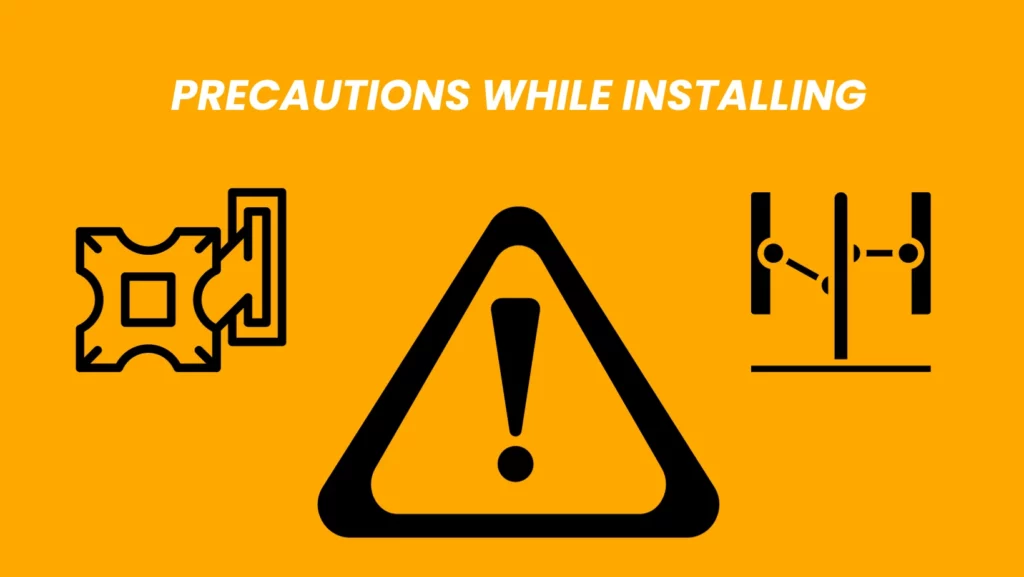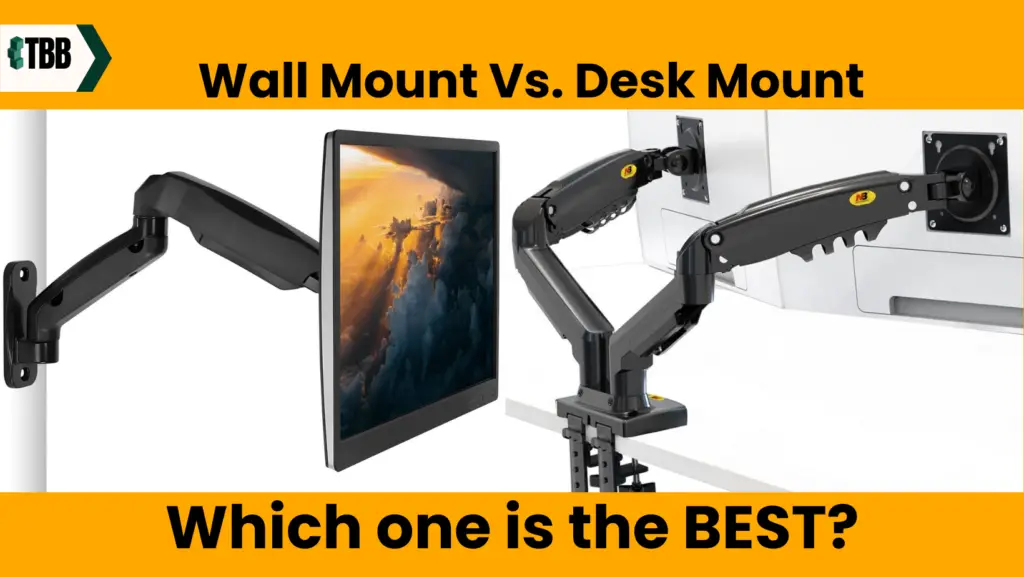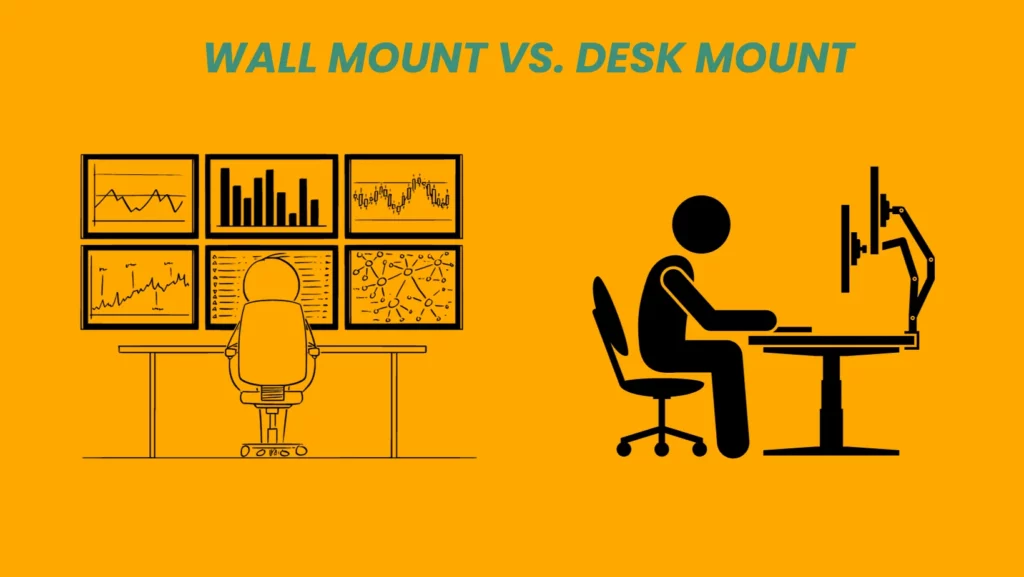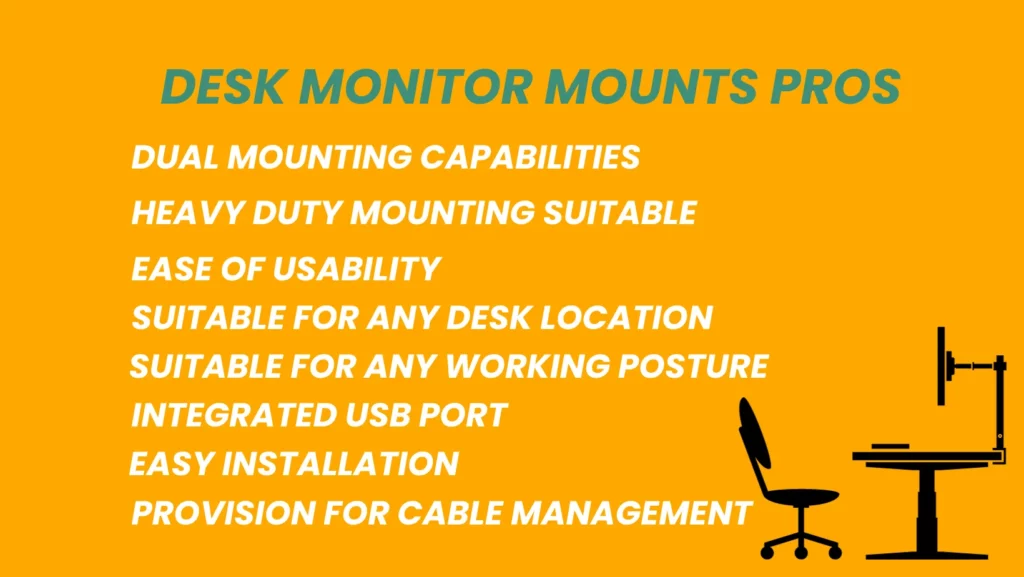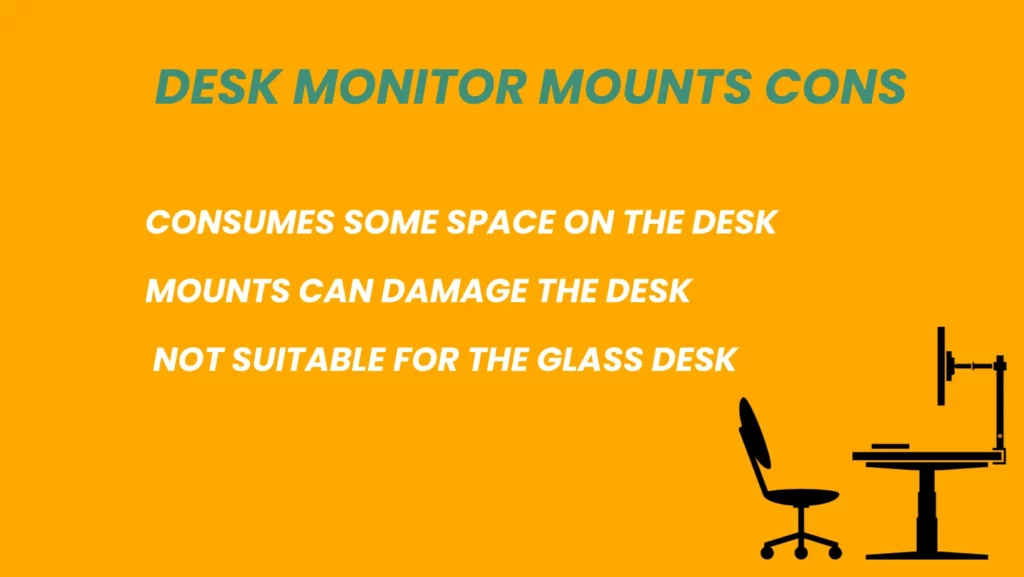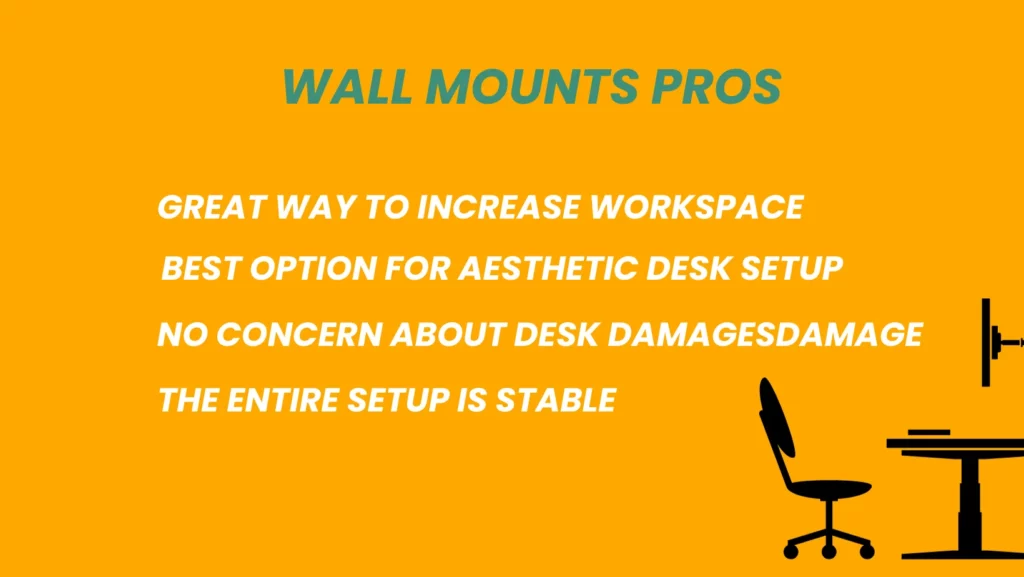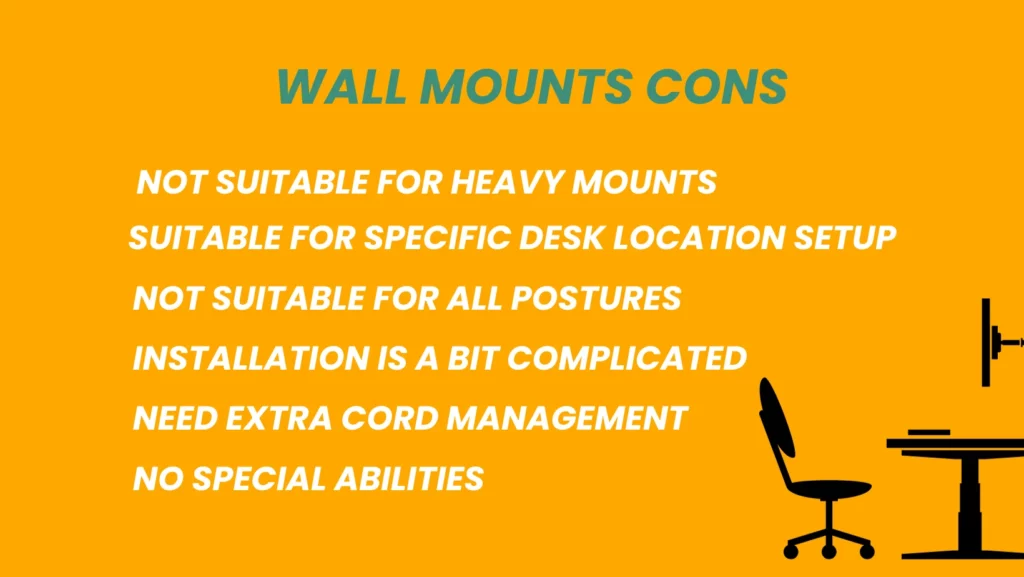In the dynamic landscape of modern work and business, a reliable and efficient monitor is an indispensable tool that can significantly enhance productivity and streamline workflows. The right monitor goes beyond a mere display – it becomes a partner in decision-making, a canvas for creativity, and a conduit for seamless collaboration. As professionals increasingly find themselves immersed in a digital work environment, the demand for monitors that deliver optimal performance, clarity, and adaptability has never been higher.
In this curated list, we present the “Top 10 Best Work and Business Monitors” – a comprehensive guide to help you navigate through the myriad of options available in the market. Join us as we explore the epitome of precision and performance, empowering you to transform your workspace into a hub of efficiency and innovation.
Are you ready to revolutionize your work environment?
Dive into a curated selection of monitors that redefine productivity and elevate your business game. The perfect blend of form and function awaits, promising to turn your workspace into a powerhouse of efficiency and creativity.
Picture this – crystal-clear displays, seamless multitasking, and precision that empowers your every task. Our handpicked list unveils monitors designed to meet the demands of modern professionals. Whether you’re crunching numbers, presenting to clients, or unleashing your creative genius, these monitors are tailored to enhance every facet of your work.
Don’t miss out on the opportunity to supercharge your business endeavors! Click now to explore the Top 10 Best Work and Business Monitors!
Unleashing the Power of Work and Business Monitors
Work and Business monitors are designed to empower professionals by providing clear, high-resolution visuals, advanced features, and adaptability to various tasks. This concept highlights the impact these monitors can have on enhancing workflow, making multitasking more seamless, and contributing to a more productive and effective work environment.
It’s about recognizing and harnessing the capabilities of these monitors to create a dynamic and powerful workspace tailored to the needs of businesses and professionals.
The Benefits of Work and Business Monitors

The benefits of work and business monitors extend far beyond basic displays, playing a crucial role in optimizing work environments, improving efficiency, and supporting the diverse needs of modern professionals across various industries.
Here are some of its benefits:
Enhanced Productivity:
Work and Business monitors offer larger screen real estate, higher resolutions, and multitasking capabilities, allowing professionals to work on multiple applications simultaneously and streamline their workflow.
Sharper Visuals for Precision Work:
High-resolution displays provide crisp and clear visuals, crucial for tasks that demand precision, such as graphic design, video editing, and data analysis.
Improved Ergonomics:
Many work and business monitors come with adjustable stands, allowing users to customize the height, tilt, and swivel for optimal viewing comfort. This enhances ergonomics, reducing strain during extended work sessions.
Advanced Connectivity:
These monitors often feature a variety of connectivity options, including HDMI, DisplayPort, and USB ports, ensuring compatibility with a range of devices and facilitating seamless collaboration.
Color Accuracy for Content Creation:
Monitors designed for work and business use often prioritize color accuracy, making them ideal for professionals in fields such as graphic design, photography, and video production where accurate color representation is crucial.
Efficient Multitasking:
Large screen sizes and high resolutions enable efficient multitasking, allowing users to view and work on multiple applications simultaneously without compromising clarity or readability.
Adaptive Display Technologies:
Some work and business monitors incorporate adaptive display technologies like AMD FreeSync or NVIDIA G-Sync, reducing screen tearing and stuttering in fast-paced applications and enhancing the overall visual experience.
Collaboration and Connectivity:
Monitors with built-in webcams, speakers, and microphone ports facilitate video conferencing and virtual collaboration, making them valuable tools for remote work and team communication.
Energy Efficiency:
Many modern monitors come with energy-saving features, such as LED backlighting and power-saving modes, contributing to reduced energy consumption and lower operational costs.
Versatility in Display Configurations:
Work and Business monitors support various display configurations, including dual-monitor or multi-monitor setups, enabling professionals to customize their workspace according to their specific needs and preferences.
Security Features:
Some work and business monitors offer security features like privacy screens or built-in privacy filters, ensuring that sensitive information remains confidential and protected from prying eyes.
Future-Ready Technology:
The Work and Business monitors often incorporate the latest display technologies, ensuring that professionals stay at the forefront of advancements, making their investment in technology future-proof.
The Top 10 Best Monitor Picks for Work and Business

We’ve curated a list of the Top 10 Best Monitor Picks for Works and Business, combining cutting-edge technology, ergonomic design, and performance to elevate your workspace and meet the demands of the contemporary professional environment.
1. Dell UltraSharp U2719D
Introducing the Dell UltraSharp U2719D LED Display, a stellar choice tailored for business excellence. With its expansive 27-inch Wide Quad HD display, boasting a resolution of 2560 x 1440 pixels, this monitor offers a brilliant canvas for professionals seeking heightened productivity, precise visuals, and an immersive work experience.
Key Features:
Screen Size: 27 Inches
Display Resolution: 2560×1440
Special Feature: HDMI input
Refresh Rate: 240 Hz
Immersive Visual Clarity:
With an impressive 2560 x 1440 pixel resolution, the U2719D delivers crystal-clear visuals, ensuring every detail is rendered with precision. Whether you’re editing documents, analyzing data, or designing graphics, the enhanced clarity elevates your business tasks.
Ergonomic Excellence:
Tailor your workspace to perfection with the monitor’s adjustable stand. Tilt, pivot, swivel, and adjust the height to your preferred position, ensuring a comfortable and ergonomic setup for extended business use. Plus, it features a flicker-free screen and ComfortView technology, reducing blue light emissions to prioritize your eye comfort during long work hours.
Connectivity and Versatility:
Versatility is key in business, and the U2719D delivers with HDMI, DisplayPort, and USB 3.0 ports. Connect seamlessly to various devices, facilitating efficient collaboration and compatibility with different peripherals. The monitor’s ultra-thin profile not only adds a touch of sophistication to your workspace but also contributes to its space-saving design, making it an excellent choice for businesses where desk real estate is a valuable commodity.
PROS
- High-Resolution Display.
- InfinityEdge Design.
- Adjustable Ergonomic Stand.
- Versatile Connectivity.
- Flicker-Free Screen and ComfortView.
CONS
- No Built-in Speakers.
- Pricing Consideration.
- Standard 60Hz Refresh Rate.
Get ready to enhance your business endeavors with the clarity, versatility, and sophistication that the Dell UltraSharp U2719D brings to the table.
2. HP Business EliteDisplay E273
The HP Business EliteDisplay E273 is a dual monitor setup designed to redefine the standard for business excellence. Boasting expansive 27-inch Full HD LED-lit screens in an elegant black and silver finish, this 2-pack monitor ensemble offers a powerful visual solution tailored specifically for the demands of a dynamic business environment.
Key Features:
Screen Size: 27 inches
Display Resolution: 1920×1080
Special Feature: Anti-Glare Screen
Connectivity Technology: VGA, DisplayPort, HDMI
Full HD LED-Lit Screens:
The HP Business EliteDisplay E273 comes with dual 27-inch Full HD LED-lit screens, providing crisp and vibrant visuals that elevate business presentations, data analysis, and content creation to a new level. The monitors feature anti-glare technology, ensuring that your work is displayed with clarity and precision even in well-lit environments, reducing eye strain during extended business use. And an IPS technology that ensures wide viewing angles and accurate color reproduction.
Plug and Play Setup:
The monitors offer a hassle-free plug-and-play setup, allowing for quick and easy integration into your business environment. Take control of your display settings effortlessly with on-screen controls. Adjust brightness, contrast, and other settings directly from the monitor, providing users with a convenient and user-friendly interface for customization. It is also has language selection and user-programmable.
Ergonomic Design and Flexibility:
Adapt the monitors to your preferred viewing orientation with pivot rotation. This ergonomic feature allows users to switch between landscape and portrait modes, optimizing the display for different tasks and enhancing overall flexibility. With its Dual Monitor 2-Pack, you can enhance your workspace with the convenience of a dual monitor setup. Plus, The anti-static feature of the HP Business EliteDisplay E273 ensures a static-free environment, promoting a cleaner workspace and reducing the risk of dust accumulation on the monitors.
PROS
- Dual Monitor Productivity.
- Full HD LED-Lit Screens.
- Anti-Glare and In-Plane Switching (IPS).
- Seamless Connectivity and On-Screen Controls.
- Ergonomic Design with Pivot Rotation.
CONS
- Potential Space Constraints.
- No Built-in Speakers.
- Full HD Resolution Limitation.
Elevate your business operations with this dual monitor solution, where versatility, performance, and sophistication converge to set the stage for unparalleled professional productivity.
3. ASUS ProArt Display PA278QV
Introducing the ASUS ProArt Display PA278QV, a 27-inch WQHD monitor meticulously designed to redefine the standard for business excellence. Boasting an IPS panel for wide viewing angles, versatile connectivity options, and an array of ergonomic features,, the ProArt Display PA278QV is not just a monitor; it’s a comprehensive solution tailored to meet the demands of a dynamic business environment.
Key Features:
Screen Size: 27 inches
Display Resolution: 2560×1440
Special Feature: Height Adjustment, Pivot Adjustment, Blue Light Filter, Flicker-Free, Built-In Speakers
Refresh Rate: 75 Hz
Precision in Every Pixel:
Dive into the world of exceptional clarity with the 27-inch WQHD display, providing a resolution of 2560 x 1440 pixels. Boasting 100% sRGB and Rec. 709 color accuracy, the ProArt Display PA278QV delivers true-to-life colors. With Delta E<2, this monitor sets a standard for precision, making it an invaluable tool for professionals requiring accurate color representation in graphic design and content creation. It is also Calman verified which ensures that the monitor meets professional color calibration standards.
Connectivity and Versatility:
The ProArt Display PA278QV offers an array of connectivity options, including DisplayPort, HDMI, DVI-D, and Mini DisplayPort. This versatility ensures compatibility with a wide range of devices, facilitating seamless integration into various professional setups. With its IPS panel, this provides wide viewing angles, ensuring consistent and accurate colors even when viewed from different perspectives. Its anti-glare features also ensure a comfortable and distraction-free viewing experience, even in well-lit environments.
Ergonomic Excellence:
Customize your viewing experience with a range of ergonomic features. Tilt the monitor for optimal viewing angles, pivot between landscape and portrait modes, swivel to accommodate different tasks, and adjust the height to ensure a comfortable and ergonomic workspace.
PROS
- Exceptional Color Accuracy.
- Versatile Connectivity.
- Calman Verified.
- Wide Viewing Angles with IPS Panel.
- Ergonomic Design with Adjustable Features.
CONS
- Higher Price Point.
- No USB-C Connectivity.
Elevate your workspace with a display that seamlessly blends performance, color accuracy, and ergonomic flexibility, setting the stage for unparalleled productivity and creativity in your professional endeavors.
4. LG UltraFine 4K Display
Meet the LG UltraFine UHD 27-inch 4K UHD 2160p Computer Monitor 27UN850-W — a business-centric powerhouse designed to transform your workspace into a hub of productivity and visual sophistication. Boasting a pristine 4K UHD resolution, IPS technology for impeccable color reproduction, and VESA DisplayHDR 400 certification, this monitor ensures that every detail is not just seen, but experienced.
Key Features:
Screen Size: 27 inches
Display Resolution: 3840×2160
Special Feature: Height Adjustment, Pivot Adjustment, USB Hub, Tilt Adjustment, High Dynamic Range
Refresh Rate: 60 Hz
Visual Brilliance Beyond Compare:
The LG UltraFine 27UN850-W offers visual brilliance beyond compare with its VESA DisplayHDR 400 compatibility, breathing life into work and virtual environments. Boasting 400 nits of brightness, this monitor enhances textures, character movements, and natural light, transcending ordinary displays. Its 27-inch 4K UHD 2160p resolution provides unmatched detail. With 99% sRGB spectrum coverage, the monitor ensures true-to-life colors, making it a perfect choice for professionals seeking unparalleled visual quality.
Seamless Gaming and Entertainment:
The inclusion of AMD FreeSync technology ensures effortlessly smooth gaming by dynamically managing the refresh rate, reducing issues like screen tearing and stuttering. The monitor’s ability to transform standard content into HDR-quality video enhances the overall viewing experience, thanks to a picture quality algorithm, tone mapping, and luminance improvements.
Intuitive Controls and User-Friendly Features:
The On-Screen Control feature facilitates effortless adjustments, allowing users to tweak settings and customize the display with just a few clicks of the mouse, ensuring a seamless and user-friendly experience. The inclusion of USB-C connectivity streamlines device compatibility, providing a convenient and versatile solution for connecting various devices, and enhancing connectivity options for a modern and dynamic work environment.
PROS
- Exceptional Visuals and HDR Support.
- AMD FreeSync Technology.
- Wide Color Spectrum Coverage.
- Versatile Connectivity with USB-C.
- Customized Game Modes and On-Screen Control.
CONS
- Not Ideal for Professional Gaming.
- No Built-in Speakers.
- Standard 60Hz Refresh Rate.
Whether you’re engaged in content creation, data analysis, or collaborative projects, the 27UN850-W is your gateway to unparalleled clarity, efficiency, and visual excellence in the business realm.
5. Samsung Business CH890 Series
The Samsung Business CH890 Series, a 34-inch WQHD Ultrawide Curved Desktop Monitor crafted with precision to elevate your business experience. With a 100Hz refresh rate, USB-C, HDMI, and DP connectivity options, and a three-year warranty, the Samsung CH890 Series is tailored to meet the diverse demands of modern businesses.
Key Features:
Screen Size: 34 inches
Display Resolution: 3440×1440
Special Feature: Height Adjustment, Curved Screen, Wall Mountable, Tilt Adjustment, Flicker-Free
Refresh Rate: 100 Hz
Immersive Productivity:
The Samsung CH890 Series offers an immersive workspace with its Ultrawide WQHD 3440 x 1440 display, fostering seamless multitasking in a panoramic view. Picture-in-picture and split-screen modes optimize efficiency, allowing professionals to navigate multiple applications simultaneously. With versatile connectivity options, integration is streamlined, and cable management is simplified, promoting a clutter-free workspace. The monitor is optimized for multimedia work, featuring a 100Hz refresh rate, AMD Free Sync technology, a 4ms response time, and a 3000:1 contrast ratio.
Ergonomic Design and Adjustability:
The Samsung CH890 Series prioritizes ergonomic comfort with its highly adjustable stand, featuring height adjustment, tilt, and swivel functionalities. This allows users to customize the monitor’s position for preferred viewing angles, ensuring comfort during extended work sessions. With VESA mounting capabilities, the monitor provides adaptability in setting up the workspace, offering flexibility for wall mounting or use with adjustable arms.
Reliability and Warranty Assurance:
The Samsung Business CH890 Series ensures reliability with a three-year warranty, offering users peace of mind and assurance of the monitor’s durability. This extended warranty period highlights Samsung’s commitment to delivering a high-quality product tailored for professional use. The monitor’s durable construction in Black/Titanium not only adds sophistication to the workspace but also reflects robust build quality.
PROS
- Immersive Ultrawide Display.
- Versatile Connectivity Options.
- High Refresh Rate and AMD Free Sync.
- Ergonomic Design and Adjustability.
- Reliability and Warranty Assurance (Renewed).
CONS
- Potential Renewed Condition Concerns.
- Limited HDR Capabilities.
- Standard 4ms Response Time.
The Ultrawide Curved design creates a more immersive and comfortable workspace, ensuring that professionals can seamlessly navigate through applications and projects. Whether you’re engaged in content creation, data analysis, or collaborative work, this monitor combines cutting-edge technology with a sleek Black/Titanium finish to deliver a powerful and sophisticated solution for the contemporary professional environment.
6. ViewSonic VP2456
Introducing the ViewSonic VP2456, a 24-inch 1080p Premium IPS Monitor designed to redefine your professional home and office experience. With ultra-thin bezels and precision color accuracy, this monitor stands out as an excellent choice for business and work settings.
Key Features:
Screen Size: 24 inches
Display Resolution: 1920×1080
Special Features: Height Adjustment, Adaptive Sync, Swivel Adjustment, USB Hub, Tilt Adjustment
Refresh Rate: 60 Hz
Premium Visual Experience
Enjoy a premium visual experience with the 24-inch Full HD IPS monitor, delivering a crisp resolution of 1920x1080p. The ultra-thin bezels contribute to an immersive display, ideal for professional applications. The monitor features a 60Hz refresh rate, ensuring smooth and responsive visuals for a seamless viewing experience during work or multimedia tasks.
Connectivity and Cable Management Convenience
Experience less cable clutter with USB-C connectivity, providing fast data, audio, and video transfer capabilities. Additionally, enjoy quick 60W charging over a single cable, streamlining your workspace. The VP2456 supports a range of devices, including laptops, PCs, Macs, and more, offering versatile connectivity.
Ergonomic Design and Color Accuracy
Benefit from all-day comfort with the monitor’s advanced ergonomic stand, offering tilt, swivel, pivot, and height adjustments to cater to individual preferences and enhance overall viewing comfort. Reduce eye fatigue with Flicker-Free technology and a Blue Light Filter, providing enhanced viewing comfort during extended work sessions. Plus, immerse yourself in exceptional color accuracy and No Image Tearing.
PROS
- Premium Visuals.
- Versatile Connectivity.
- Ergonomic Design.
- Color Accuracy.
- USB-C Convenience.
CONS
- Moderate Screen Size.
- No Built-in Speakers.
- Standard Full HD Resolution.
The ViewSonic VP2456 is a great choice for professionals seeking a reliable, high-performance monitor that caters to both style and substance in their professional endeavors.
7. Acer R240HY
The Acer R240HY bidx, is a 23.8-inch widescreen monitor designed to elevate your business and work experience. What sets it apart is the integrated USB 3.0 Dock U301, offering seamless connectivity to your laptop through 2 HDMI ports and a USB 3.1 UFP, making it an excellent choice for professionals seeking enhanced productivity and streamlined workspaces.
Key Features:
Screen Size: 23.8 inches
Display Resolution: 1920×1080
Special Features: Wide Screen
Refresh Rate: 60 Hz
Visual Excellence
The 23.8-inch Full HD IPS widescreen offers a crystal-clear visual experience with a resolution of 1920 x 1080, providing sharp and vibrant images for work and entertainment. With a 178-degree wide viewing angle, this monitor ensures consistent and accurate colors, allowing users to collaborate or present content without compromising visual quality.
Seamless Connectivity
Enjoy flexible connectivity options with 1 x HDMI, 1 x DVI (with HDCP), and 1 x VGA inputs, accommodating various devices and ensuring compatibility with different connection standards. The USB 3.0 or USB-C interface, with the included cable, provides a convenient and efficient connection to your laptop, streamlining data transfer and offering an additional layer of versatility.
Enhanced Productivity Ports
With 2 x HDMI ports, the monitor enables multitasking and seamless switching between devices, allowing users to connect multiple sources simultaneously. Featuring 4 x USB 2.0 and 2 x USB 3.1 Gen 1 ports, this monitor provides extensive connectivity for peripherals and accessories, offering a practical solution for professionals requiring multiple USB-enabled devices in their workspace.
PROS
- Integrated USB Hub.
- Versatile Connectivity.
- Full HD IPS Display.
- Quick Response Time.
- USB-C Interface.
CONS
- Limited Resolution for Size.
- No Built-in Speakers.
- Potential Cable Management Challenges.
With additional USB 2.0 and USB 3.1 Gen 1 ports, the Acer R240HY bidx ensures efficient connectivity and data transfer, catering to the diverse needs of a modern work environment.
8. BenQ PD2705UA
Introducing the BenQ PD2705UA Ergo Arm Mac-Ready 27″ 4K UHD monitor – a powerhouse tailored for business and work environments. Boasting a 99% Rec. 709 & sRGB color gamut, IPS panel, and DeltaE ≤3, this monitor delivers unparalleled color accuracy and visual clarity crucial for professional tasks.
Key Features:
Screen Size: 27 inches
Display Resolution: 3840×2160
Special Features: USB Type-C, Ergo Arm, 65W Power Delivery, Hotkey Puck G2, 27″ UHD
Refresh Rate: 60 Hz
Color Precision and Calibration
PD2705UA boasts AQCOLOR technology, covering 99% Rec.709, 99% sRGB with Delta E ≤ 3 accuracy on an IPS panel. It is also Pantone, Pantone SkinTone Validated & Calman Verified, ensuring meticulous color calibration for true-to-life visuals.
Ergonomic Design and Flexibility
The PD Ergo Arm offers complete flexibility with swivel, height adjustment, pivoting, and tilting functionalities. Additionally, it integrates cable management within the arm, ensuring a clutter-free and customizable workspace tailored to individual preferences.
Seamless Connectivity and Efficiency Boost
The monitor comes equipped with a 90W USB-C, providing seamless synchronization of images, videos, and data, while also serving as a power source to charge Mac devices. This all-in-one cable solution streamlines connectivity and enhances workspace efficiency. The inclusion of a Keyboard Video Mouse (KVM) switch enables users to display content from two PC systems using one set of keyboard and mouse, saving space and boosting work efficiency by eliminating the need for multiple input devices.
PROS
- Color Accuracy and Calibration.
- Ergonomic Flexibility.
- Efficient Connectivity.
- KVM Switch for Efficiency.
- Versatile Connectivity Options.
CONS
- Premium Price Point.
- Complex Features for Casual Users.
- Limited Refresh Rate.
Equipped with DisplayPort, USB-C (65W), and a USB Hub, this monitor offers versatile connectivity options, making it an exceptional choice for professionals seeking a high-performance display solution that caters to both visual excellence and ergonomic comfort.
9. Lenovo ThinkVision P27h-20
The Lenovo ThinkVision P27h-20, a 27-inch WQHD WLED LCD Monitor is designed to elevate your business and work experience. With its sleek Raven Black design and boasting a 350-nit typical brightness and a swift 4ms response time, the P27h-20 ensures clarity and responsiveness for professional tasks.
Key Features:
Screen Size: 27 inches
Display Resolution: 2560×1440
Connectivity Technology: Bluetooth, USB, DisplayPort, HDMI
Refresh Rate: 60 Hz
Multifaceted Connectivity:
The Lenovo ThinkVision P27h-20 offers versatile connectivity options, including HDMI, USB-C, DisplayPort, and USB 3.0 ports, ensuring compatibility with a wide range of devices and peripherals for seamless integration into various work setups.
Sleek Design and Flat Screen
The monitor features a Raven Black design, adding a touch of sophistication to your workspace. Its sleek and modern appearance enhances the overall aesthetics of your professional environment. The flat screen design not only contributes to the monitor’s contemporary look but also ensures a space-saving profile, fitting seamlessly into modern workspaces with a clean and streamlined appearance.
Ideal for Casual Computing
Tailored for casual computing, the Lenovo ThinkVision P27h-20 strikes a balance between performance and user-friendly features. With a 27-inch class display and In-Plane Switching (IPS) Technology, it provides a comfortable visual experience for everyday tasks, making it an ideal choice for professionals engaged in casual computing activities.
PROS
- High-resolution display.
- Versatile Connectivity.
- Sleek and Modern Design.
- Brightness and Response Time.
- In-Plane Switching (IPS) Technology.
CONS
- May Not Meet Professional Color Grading Needs.
- Limited Specialized Features.
- Integrated Speakers Absent.
Its 16:9 aspect ratio and 27-inch class display provide ample screen real estate for multitasking, making it an excellent choice for professionals seeking a reliable and visually impressive monitor to enhance productivity in business and work environments.
10. Philips 276E8VJSB
The PHILIPS 276E8VJSB 27″ Monitor, is a stellar choice for business and work environments. With its 4K UHD IPS display and ultranarrow borders, this monitor delivers stunning visuals with exceptional clarity and vibrant colors. Furthermore, the inclusion of a 4-year advance replacement warranty underscores the monitor’s reliability and commitment to providing an optimal professional experience.
Key Features:
Screen Size: 27 inches
Display Resolution: 3840×2160
Connectivity Technology: Tilt Adjustment, Blue Light Filter, Flicker-Free
Refresh Rate: 60 Hz
Crystal-Clear Visual Experience
Philips 276E8VJSB boasts an UltraClear 4K UHD resolution (3840×2160) with an IPS panel, providing wide viewing angles and exceptional clarity for detailed and precise visuals, making it an ideal choice for business applications that demand high-resolution displays. The carefully calibrated IPS panel produces over 1.074 billion colors, ensuring smooth color gradations and detail. Covering over 109% sRGB color gamut area, it accurately represents photos, making it suitable for tasks where color accuracy is crucial.
Sleek Design and Seamless Display
The monitor features an elegant and slim design complemented by ultranarrow borders, providing a seamless and aesthetically pleasing appearance that enhances the overall workspace ambiance. The MultiView technology enables active dual connect and view simultaneously, offering enhanced multitasking capabilities. This feature is particularly useful for business professionals who need to work with multiple applications simultaneously.
Enhanced Comfort and Reliability
The monitor is equipped with DisplayPort 1.2 and HDMI 2.0 (x2) inputs, along with HDMI audio-out for added convenience, ensuring compatibility with a variety of devices for seamless connectivity. Lessen eye fatigue during prolonged use with Flicker-free technology and the LowBlue Mode, and the monitor is TCO certified and EnergyStar 7.0 compliant, meeting environmental standards.
PROS
- High-Resolution Visuals.
- Rich Color Reproduction.
- Sleek Design with Ultranarrow Borders.
- MultiView Technology.
- 4-Year Advance Replacement Warranty.
CONS
- Limited Specialized Features.
- May Lack Advanced Calibration Options.
- Standard Refresh Rate.
For those seeking a combination of cutting-edge display technology, thoughtful features, and long-term reliability, the PHILIPS 276E8VJSB stands out as an excellent choice for business and work applications.
These top 10 business monitor picks offer a blend of high resolution, color accuracy, ergonomic design, and connectivity options, catering to the diverse needs of professionals in various industries. Consider the specific requirements of your business and choose a monitor that aligns with your workflow and enhances productivity.
5 Factors to Consider When Choosing a Work or Business Monitor

1. Display Resolution:
Consider the display resolution, as it directly impacts image clarity and workspace productivity. Higher resolutions, such as 4K UHD, provide sharper visuals and increased screen real estate, suitable for tasks like content creation, design, and data analysis.
2. Panel Type and Color Accuracy:
Opt for monitors with In-Plane Switching (IPS) panels for accurate and consistent colors. Color accuracy is crucial for professionals involved in graphic design, photo editing, video production, and other color-critical tasks.
3. Connectivity Options:
Evaluate the monitor’s connectivity options to ensure compatibility with your devices. Look for a mix of HDMI, DisplayPort, USB-C, and USB hubs. Versatile connectivity allows you to connect multiple devices simultaneously, enhancing your multitasking capabilities.
4. Ergonomic Features:
Choose a monitor with ergonomic features such as height adjustment, tilt, swivel, and pivot options. These features contribute to a comfortable and customizable workspace, reducing strain during long work sessions.
5. Warranty and Customer Support:
Consider the warranty and customer support provided by the manufacturer. A reliable warranty, especially with features like advanced replacement, ensures peace of mind. Responsive customer support is essential for addressing any potential issues promptly.
Frequently Asked Questions About Top 10 Best Work and Business Monitors
Q: What factors should I consider when choosing a work or business monitor?
A: Consider factors such as display resolution, panel type (e.g., IPS for accurate colors), size, connectivity options, ergonomic features, and any specialized requirements for your work tasks.
Q: What is the significance of display resolution in a business monitor?
A: Higher display resolution, such as 4K UHD, provides sharper images and increased screen real estate, enhancing productivity and clarity for tasks like content creation, design, and data analysis.
Q: Are ultrawide monitors suitable for business use?
A: Yes, ultrawide monitors offer increased multitasking capabilities and can be beneficial for professionals working with multiple applications simultaneously. Consider the specific requirements of your tasks.
Q: What connectivity options are essential for a business monitor?
A: Look for monitors with versatile connectivity options, including HDMI, DisplayPort, USB-C, and USB hubs. This ensures compatibility with various devices and allows for efficient multitasking.
Q: How important is color accuracy for business monitors?
A: Color accuracy is crucial for tasks such as graphic design, photo editing, and video production. Monitors with IPS panels and color calibration features can provide more accurate and consistent colors.
Final Thoughts
Selecting the right work or business monitor is crucial for enhancing your productivity and comfort. Consider factors such as display resolution for clear visuals, panel type for accurate colors, versatile connectivity options for seamless device integration, ergonomic features for a comfortable workspace, and the reliability of warranty and customer support. Each monitor on our list offers a unique blend of these features, catering to different professional needs.
Whether you prioritize high-resolution displays, color accuracy, or multitasking capabilities, finding the perfect monitor from our top 10 recommendations can significantly elevate your work experience. Invest in a monitor that aligns with your specific requirements and enjoy a more efficient and enjoyable work setup.


